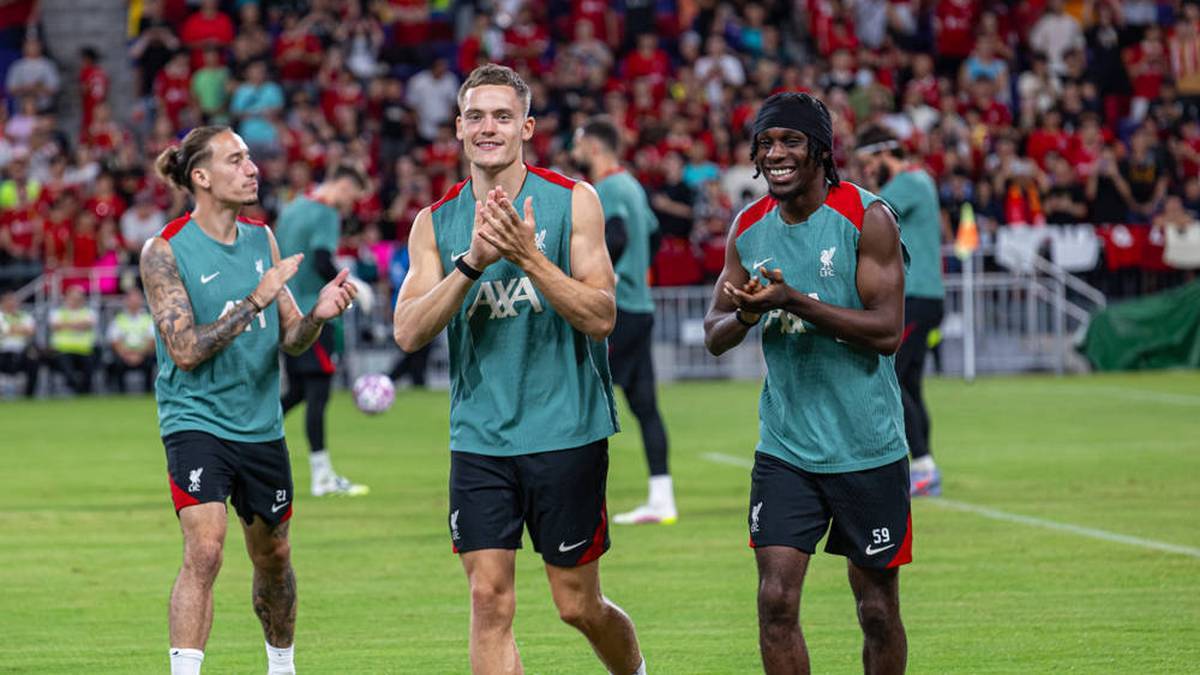
The FC Liverpool is throwing money around in the current transfer window and is making one big transfer after another. But how is that possible?
The transfer window is still open for over a month. Players, coaches, fans, and experts are shown practically every summer how unbelievably much can happen in this comparatively short time for football. But this time, weeks before the deadline, it is already becoming clear which club will be the king of spending this year: FC Liverpool, the current champion of the Premier League.
The Reds have already spent a staggering 309 million euros on new players. A dizzying sum. German international Florian Wirtz came from Leverkusen for 125 million euros. Jeremie Frimpong took the same route for 40 million euros. Hungarian left-back Milos Kerkez cost almost 47 million euros. Frankfurt’s Hugo Ekitike moved to England for 95 million euros – and there is no end in sight to the buying spree.

Florian Wirtz (l.) and Jeremie Frimpong (r.) have moved from Leverkusen to Liverpool
If you believe those involved, the answer is relatively simple: through damn clever planning and years of preparation. LFC Managing Director Billy Hogan recently described in an interview with The Athletic that the current wave of spending is not the result of a sudden change of heart in the club’s philosophy, but rather part of a conscious, strategic plan that has long been set in motion and is now becoming increasingly visible to the public.
“One of the things we constantly focus on is this ‘virtuous cycle’. We try to run the club in such a way that we can generate as much revenue as possible. Of course, that helps to invest more in the team,” said Hogan, explaining: “The difficulty is when you only look at a single summer. That probably distorts the data. Last summer there were many comments saying that we hadn’t spent enough.” A valid point.
Last year, there were only two names on the transfer list: Italian Federico Chiesa, who cost twelve million euros. And goalkeeper Giorgi Mamardashvili, for whom the Reds paid 30 million euros. The 42 million euros in expenses were ultimately offset by 47 million euros in revenue – a transfer surplus that is rather atypical for English clubs. However, Liverpool’s owners, the Fenway Sports Group, have always been reluctant investors in recent years.
The corresponding regulations stipulate that a club may accumulate a maximum loss of 105 million pounds (around 120 million euros) within a period of three years. If this value is exceeded, there will be consequences in the form of point deductions. For example, FC Everton (8 points) and Nottingham Forest (4 points) received these in the 2023/24 season. The crux of the matter, however, is that the loss does not only refer to the transfer balance sheet, but that income from TV money or ticket sales can also be offset.
As is well known, the Reds generate high revenues in these areas. In simple terms, one could say that Liverpool held back on the transfer market for a long time in order to strike fully this summer. Looking to the future, the competition could therefore become anxious. If Slot and his team were already almost invincible last season, the squad has now been significantly upgraded again.